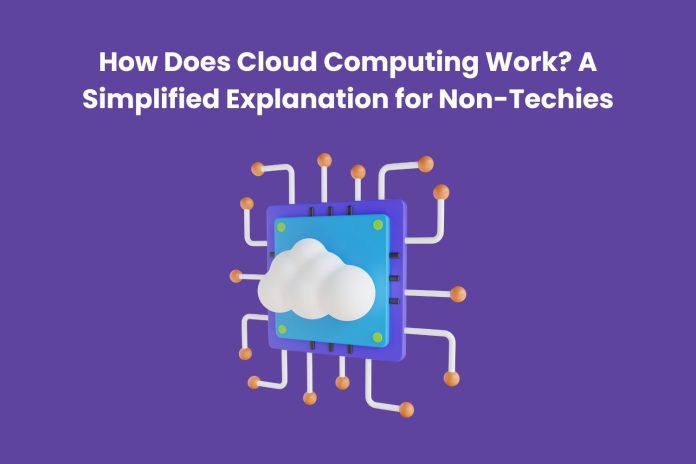
In today’s digital age, the term “cloud computing” is all over, yet many find themselves asking, “What is Cloud Computing, and how does it work?” In this blog we’ll demystify the complexities of cloud computing in a way that’s accessible to non-techies. Join us as we unravel the magic behind the cloud and explore the fundamental concepts that make it an integral part of our modern technology. Also, we’ll explore the significance of Cloud Computing Courses.
Contents
What is Cloud Computing?
First, let’s have a basic grasp of cloud computing before we go into its operation. At its most basic, computer in the cloud is the practice of providing computer resources to users over the internet. Cloud computing allows users to remotely access resources over the internet rather than depending on local servers or personal devices to manage data and applications.
Key Components of Cloud Computing
Here are the Key Components of Cloud Computing:
Infrastructure as a Service (IaaS): This part offers online access to virtualized computer resources. Users may rent storage, networking, and virtual computers, doing away with the need to own and maintain actual hardware.
Platform as a Service (PaaS): PaaS provides a platform that relieves users of the burden of understanding and managing complicated underlying technology, enabling them to build, operate, and manage applications. Application development is made easier with its help.
Software as a Service (SaaS): SaaS delivers software applications over the internet, eliminating users needing to install, manage, or maintain the software locally. Email services, office productivity suites, and CRM applications are examples.
How Does Cloud Computing Work?
Think of the cloud as an interconnected system of computers housed in various data centres throughout the globe. Many services are made possible by the cooperative efforts of these servers, which are all linked to one another. In essence, you are drawing on these distant servers’ storage space, processing power, and other resources when you use the cloud to retrieve data or execute apps.
Data Storage and Retrieval
Your data and programs are kept on your device or a company-owned server in a conventional computer arrangement. These assets are housed on distant servers run by cloud service providers in a cloud computing environment. You communicate with these remote servers over the internet whenever you upload a file to the cloud or retrieve data from it.
Virtualization
One important idea in cloud computing is virtualization. Computing resources like servers, storage, and networks may be virtually replicated in this way. Several users may safely and securely share the same physical hardware through virtualisation. One of the secrets to making the most of cloud resources is virtualization.
Accessibility Anytime, Anywhere
Cloud computing is characterised by its accessibility, one of its distinguishing aspects. Anywhere you have an internet connection, whether it is at home, at the workplace, or halfway across the globe, you may access your files and programs stored in the cloud. Companies and people alike will find this flexibility to be a game-changer.
Scalability and Elasticity
With cloud computing, scalability is a breeze. You may simply increase your computer capabilities without purchasing new gear if your company’s demand suddenly spikes. Conversely, when demand is low, you may cut down and pay for what you use. Efficient and economical, this elasticity is great for managing computer resources.
Conclusion
The advent of cloud computing has altered how information and programs are stored, retrieved, and administered. If people and companies take the time to learn the ropes of cloud computing, they will be better equipped to reap the advantages of this model. Those interested in delving further into this world may get the knowledge and abilities to confidently traverse the cloud by enrolling in cloud computing courses. So, diving into cloud computing is a powerful and illuminating experience, whether you’re a non-techie who wants to know how the cloud works or an aspiring cloud professional.
